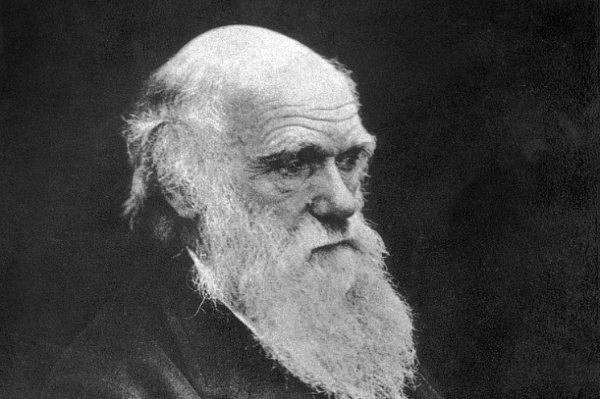Science
Caste And Nasal Indices: The Legacy of Colonial Distortions

Charles Darwin who pioneered the theory of evolution (Spencer Arnold/Getty Images)
In 1831, on 27 December, the HMS Beagle started its voyage with a young 'amateur' naturalist onboard. This young man could also act as a kind of priest because he had studied (and dropped out of) theology. He was Charles Darwin.
He was almost not selected to be on board by the ship's captain, Robert Fitzroy.
Fitzroy was everything that a typical colonial-era European elite was. A staunch Christian and a believer in the superiority of European races, he also held that the body morphology was an indicator of human character. It was a belief very much prevalent in Europe of the time and was almost considered as part of science.
In this scheme of things sharper the nose, the more intelligent a person would be. If the nose was a snub one, then its owner was a dull unintelligent person.
This 'science' was called Physiognomy. Darwin's nose did not meet the length criterion of Fitzroy and he was thinking of dismissing Darwin as not eligible. Later, when he found Darwin to be intelligent and astute, and when both grew a little friendly, Fitzroy shared this earlier apprehension with him.
Twenty-three years after this, in 1854, Max Muller, searching for physical clues to differentiate between 'Aryans' and 'Dasyus', whom he considered as separate races, wrote:
Still, Muller was admittedly speculative and cautious. Later, with the creation of the nasal index by Herbert Hope Risley, this would be converted into what would look like a hard-science of anthropometry. Risley was three years old when Max Muller was speculating on the shape of nose as a marker of racial difference between the 'Aryan' and 'Dasyu'.
Risley borrowed the nasal index from Paul Topinard, a famous French anthropologist who believed in the 'permeance of types' and also believed that Australian aborigines are the last vestiges of an altogether different races of a bygone era.
Topinard believed in using physical measurements like the shape and length of nose as well as jaw shape etc. to create a grand scheme of taxonomy of human races.
With this framework, Risley congratulated himself, asserting the nasal index's alignment with both ancient data and modern sciences.
One can see here how the highly speculative and very much guarded expression of Max Muller becomes an assertion of fact about Vedic society for Risley.
One can be sure that were such a study of nasal indices applied to that era's European society - British or otherwise- one could have come with a caste structure there as well - from Anglo-Saxon dukes to Welch peasants.
Perhaps they would even have done that. The colonial empire and 'discovery' of the 'other races' allowed the Western society to transfer their own prejudices and superstitions as 'scientific studies' and project them onto the societies like India and African societies. A pre-Darwinian, unscientific European superstition or as they call it, an 'old wives' tale', became a law in a colonised nations like India - distorting and poisoning the relations between communities and their own self-perspectives.
And what we, from the religious heads to bureaucrats to political strategists, call as 'upper' and 'lower' castes are based on such colonial interventions. What is to be seen is if India's indigenous spirituality has the strength to break these colonial shackles of the mind.
Support Swarajya's 50 Ground Reports Project & Sponsor A Story
Every general election Swarajya does a 50 ground reports project.
Aimed only at serious readers and those who appreciate the nuances of political undercurrents, the project provides a sense of India's electoral landscape. As you know, these reports are produced after considerable investment of travel, time and effort on the ground.
This time too we've kicked off the project in style and have covered over 30 constituencies already. If you're someone who appreciates such work and have enjoyed our coverage please consider sponsoring a ground report for just Rs 2999 to Rs 19,999 - it goes a long way in helping us produce more quality reportage.
You can also back this project by becoming a subscriber for as little as Rs 999 - so do click on this links and choose a plan that suits you and back us.
Click below to contribute.
Latest